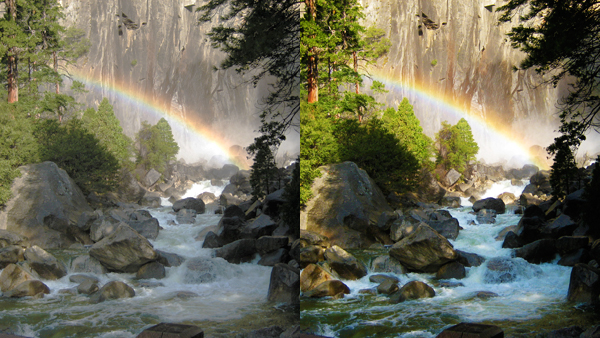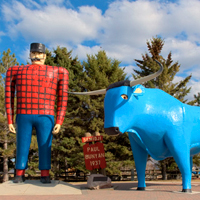How Does the Light Affect How Bright a Color Appears?
There are two general ways that lighting influences the apparent colors of objects. These are due to changes in the color of the light and changes in the amount of light. Color changes can have very strange effects. For example, if you were to illuminate a scene with red light, then red objects in the scene would appear brighter while blue or green objects might appear darker, or even black. In general, when the color of the illumination changes, objects of color similar to the illumination color become brighter.
More commonly we observe changes due to the amount of light. Think about how a room in your home appears in bright daylight, at dusk, and with lights on at night. If it didn't change in appearance we wouldn't be able to figure out what time of day it was without looking at a clock! In general, when there is more light falling on a scene it appears brighter, more colorful, more contrasty (the differences between colors show up more), sharper (more in focus), and less noisy (or grainy). You can observe all of these changes if you look closely.
Parts of these changes are due to the transition between rod vision and cone vision. Rod vision serves us in very low light levels. In order to gain that sensitivity to light, the rods collect light over larger areas and this results in less sharpness. Things also look more noisy, or grainy, because detecting such low amounts of light is difficult for the rod photoreceptors. When we are using our cones, we collect light over smaller areas so everything is sharper. It is also less noisy because there is plenty of light to capture. Rods can only produce black-and-white vision, so as the light increases and we transition to cone vision, the world starts to appear more colorful. As the light level increases further, the differences between colors become much easier to discriminate and everything looks more contrasty (bright and colorful). Also our pupils can close down when there is more light and that can help make the world appear more in focus.
![]()
Explore the NEXT TOPIC at this level.
Explore the NEXT LEVEL on this topic.
Ever wonder ... How many different color crayons are there?
Updated: April 19, 2011

